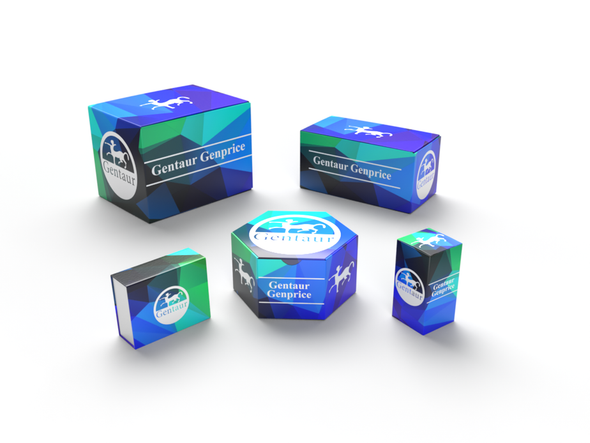749
Human Urinary bladder cancer antigen (UBC) ELISA Kit | KTE60104
- SKU:
- 749-KTE60104
- Availability:
- Usually ships in 5 working days
Description
Human Urinary bladder cancer antigen (UBC) ELISA Kit | KTE60104 | Gentaur UK, US & Europe Distribution
Application: This Human Urinary bladder cancer antigen (UBC) ELISA Kit employs a two-site sandwich ELISA to quantitate UBC in samples. An antibody specific for UBC has been pre-coated onto a microplate. Standards and samples are pipetted into the wells and anyUBC present is bound by the immobilized antibody. After removing any unbound substances, a biotin-conjugated antibody specific for UBC is added to the wells. After washing, Streptavidin conjugated Horseradish Peroxidase (HRP) is added to the wells. Following a wash to remove any unbound avidin-enzyme reagent, a substrate solution is added to the wells and color develops in proportion to the amount of UBC bound in the initial step. The color development is stopped and the intensity of the color is measured.
Detection Method: Colorimetric
Conjugate: N/A
Sample Type: Cell culture supernatants#Serum#Plasma#Other biological fluids
Assay Type: Multiple steps standard sandwich ELISA assay with a working time of 3-5 hours. It depends on the experience of the operation person.
Kit Component: • Human Urinary bladder cancer antigen microplate
• Human Urinary bladder cancer antigen standard
• Human Urinary bladder cancer antigen detect antibody
• Streptavidin-HRP
• Standard diluent
• Assay buffer
• HRP substrate
• Stop solution
• Wash buffer
• Plate covers
Features & Benefits: Human Urinary bladder cancer antigen (UBC) ELISA Kit has high sensitivity and excellent specificity for detection of Human UBC. No significant cross-reactivity or interference between Human UBC and analogues was observed.
Calibration Range: Please inquire
Limit Of Detection: Please inquire
Usage Note: • Do not mix components from different kit lots or use reagents beyond the kit expiration date.
• Allow all reagents to warm to room temperature for at least 30 minutes before opening.
• Pre-rinse the pipet tip with reagent, use fresh pipet tips for each sample, standard and reagent to avoid contamination.
• Unused wells must be kept desiccated at 4 °C in the sealed bag provided.
• Mix Thoroughly is very important for the result. It is recommended using low frequency oscillator or slight hand shaking every 10 minutes.
• It is recommended that all samples and standards be assayed in duplicate or triplicate.
Storage Instruction: The unopened kit should be stored at 2 - 8°C. After opening, please store refer to protocols.
Shipping: Gel pack with blue ice.
Precaution The product listed herein is for research use only and is not intended for use in human or clinical diagnosis. Suggested applications of our products are not recommendations to use our products in violation of any patent or as a license. We cannot be responsible for patent infringements or other violations that may occur with the use of this product.
Background: The modification of proteins with ubiquitin is an important cellular mechanism for targeting abnormal or short-lived proteins for degradation. Ubiquitination involves at least three classes of enzymes: ubiquitin-activating enzymes (E1s), ubiquitin-conjugating enzymes (E2s) and ubiquitin-protein ligases (E3s) . Ubiquitin-conjugating enzyme E2 L3 is a member of the E2 ubiquitin-conjugating enzyme family. This enzyme is demonstrated to participate in the ubiquitination of p53, c-Fos, and the NF-kB precursor p105 in vitro. Two alternatively spliced transcript variants encoding distinct isoforms have been found for this gene.
Alternative Names: UBC
Search name: UBC
Tag: UBC






